Don’t bring a knife to a gunfight. This advice from the old West is still good, especially when you’re photographing wildlife.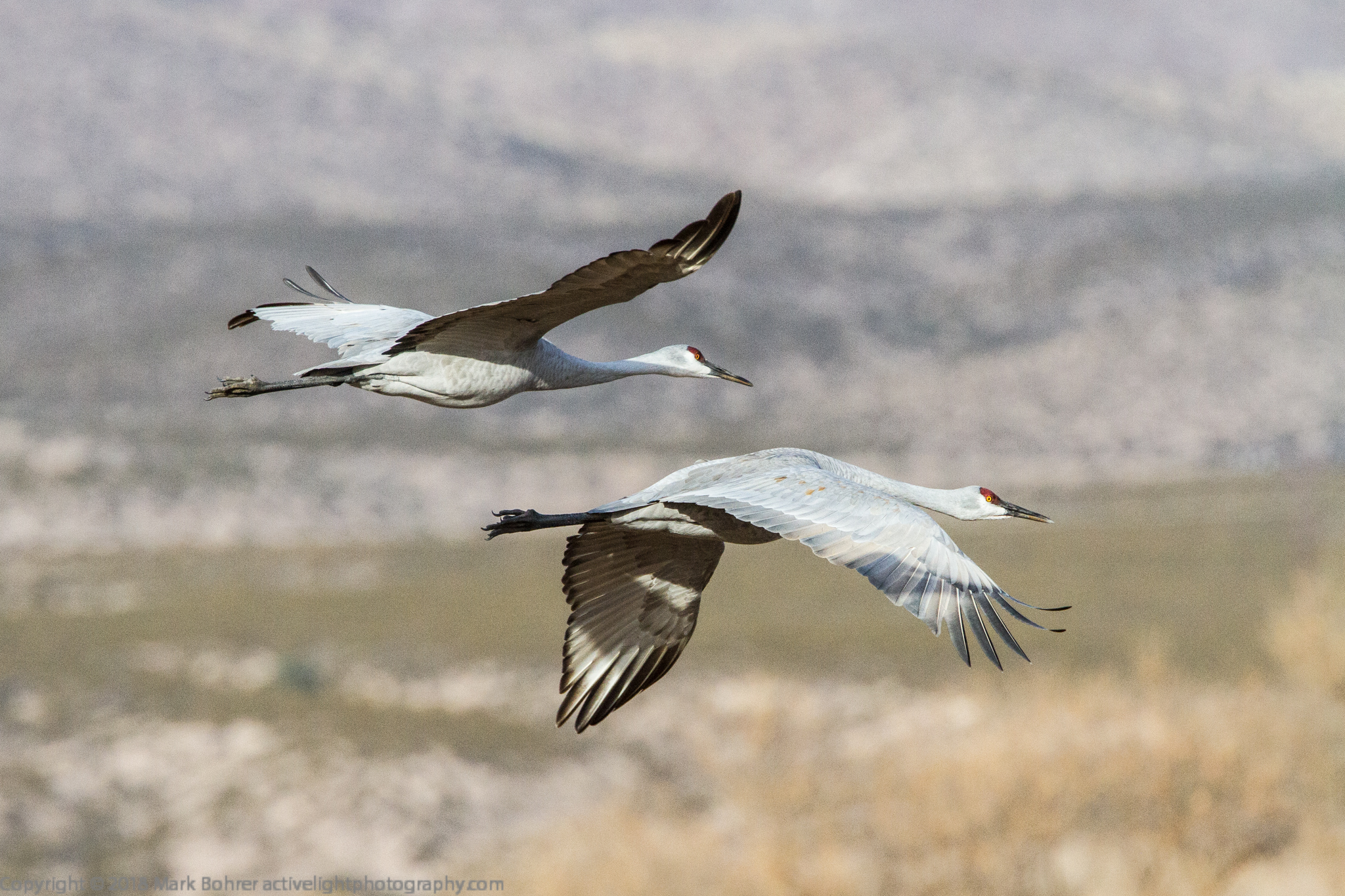 Sandhill cranes For birds, you’ll want at least a 400mm lens, and preferably something longer. A 18-55mm kit lens won’t cut it. You’ll get little tiny dots at 55mm, not the large birds you thought you saw. Winter Birds at Bosque THE place for fall and early winter birds in New Mexico is Bosque del Apache. Sandhill cranes and snow geese fly over 3500 miles south from the arctic every year to feed there. The colder seasons are the perfect time for humans too, with predictably-good conditions for photography. The winter sun crosses the sky at a low angle, letting the light filter through more layers of atmosphere to soften it. This also extends magic hour warm light at both ends of the day, and makes it my favorite time of year to shoot. 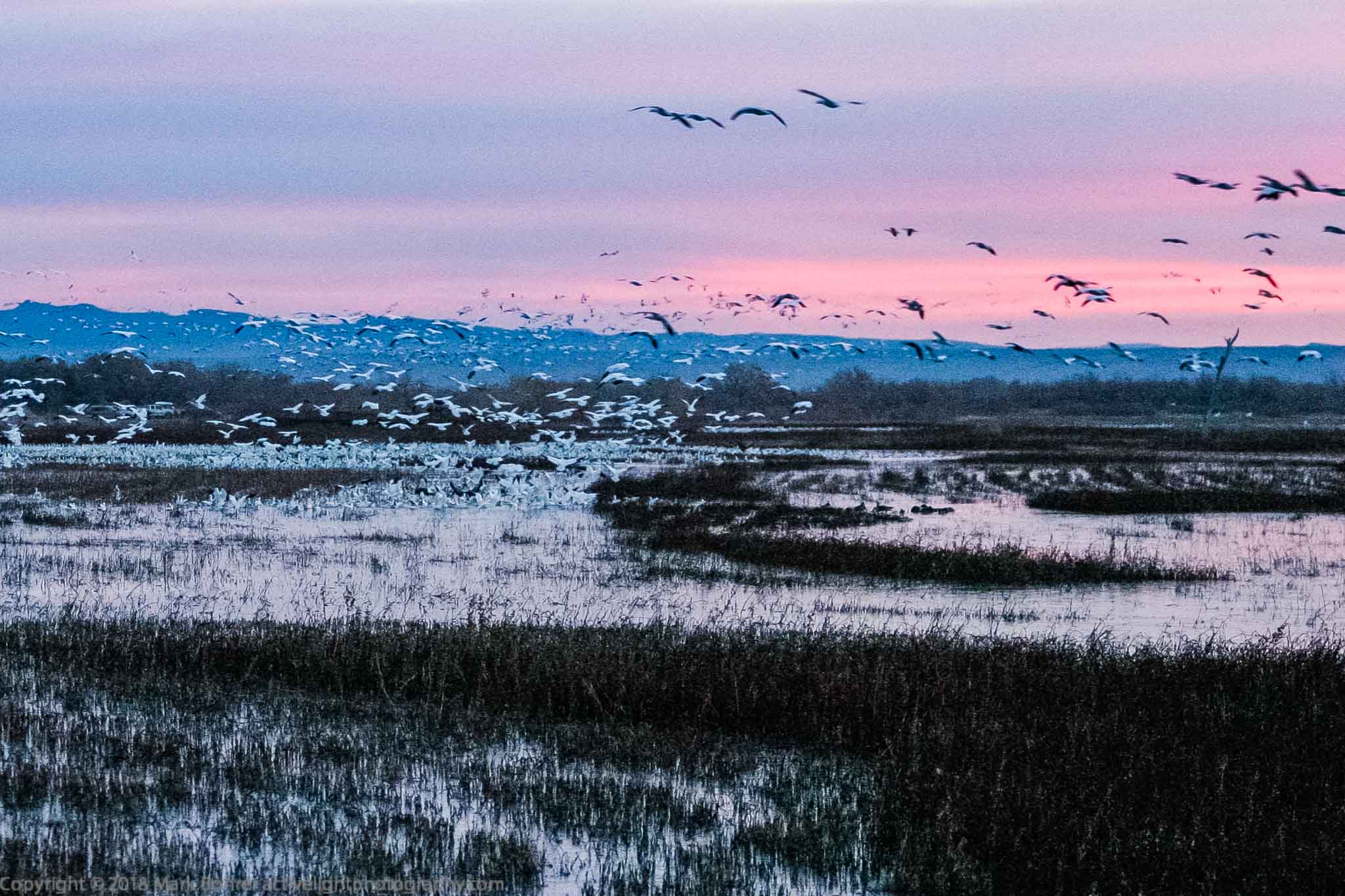 2003 – Snow goose sunrise liftoff Bosque can give you incredible sunrise colors, great as a backdrop for entire flocks of snow geese taking off in a raucous blast of beating wings and gabbling calls. But this trip, we weren’t that lucky. Starting Late We arrived an hour before sunset. I hadn’t been here in 14 years, so it was time to get re-aquainted with the place. I’d looked at the map online, and remembered the general layout – two viewing areas, each with one-way loop roads, and a center two-way road dividing them. After a brief stop at the visitor center, we drove in and went looking for birds. Unlike my last visit, they weren’t close to the road. We ignored first views of a large flock of snow geese – they were too far away, even for my longest lens combo. So we decided to take the North (Farm) Loop and see if we could get closer. Where’s the Closeup? The snow geese were still too far away once once we turned the corner and drove north a bit, and they all flew off after a few minutes anyway. So I concentrated on sandhill cranes in the waning evening light. The 560mm combination of 400mm f/4 DO IS and 1.4X extender on a crop-sensor EOS 7D gave me an 896mm field of view. We stopped several times so I could capture a few shots of sandhill cranes, who hadn’t flown and were quite a bit closer. We curved around to the end of the loop as the sun set, but saw no other wildlife photo ops. It was strictly landscape shooting at that point. 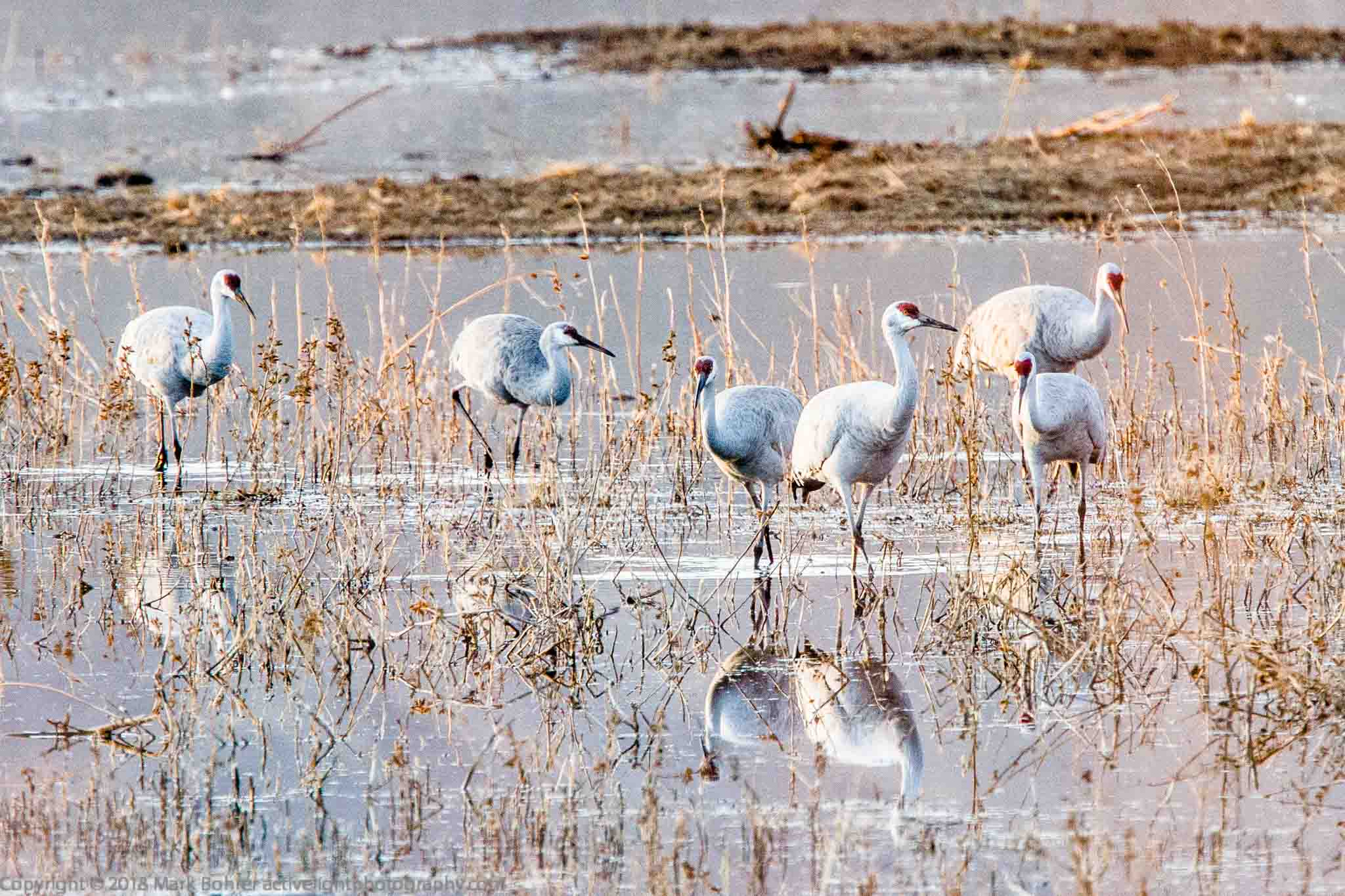 Sandhill cranes in the ponds I had slightly better luck next morning with cranes, but no sunrise color. Food options in San Antonio, NM and nearby Socorro were pretty limited, so we migrated 90 minutes southeast to Ruidoso for a change of pace. 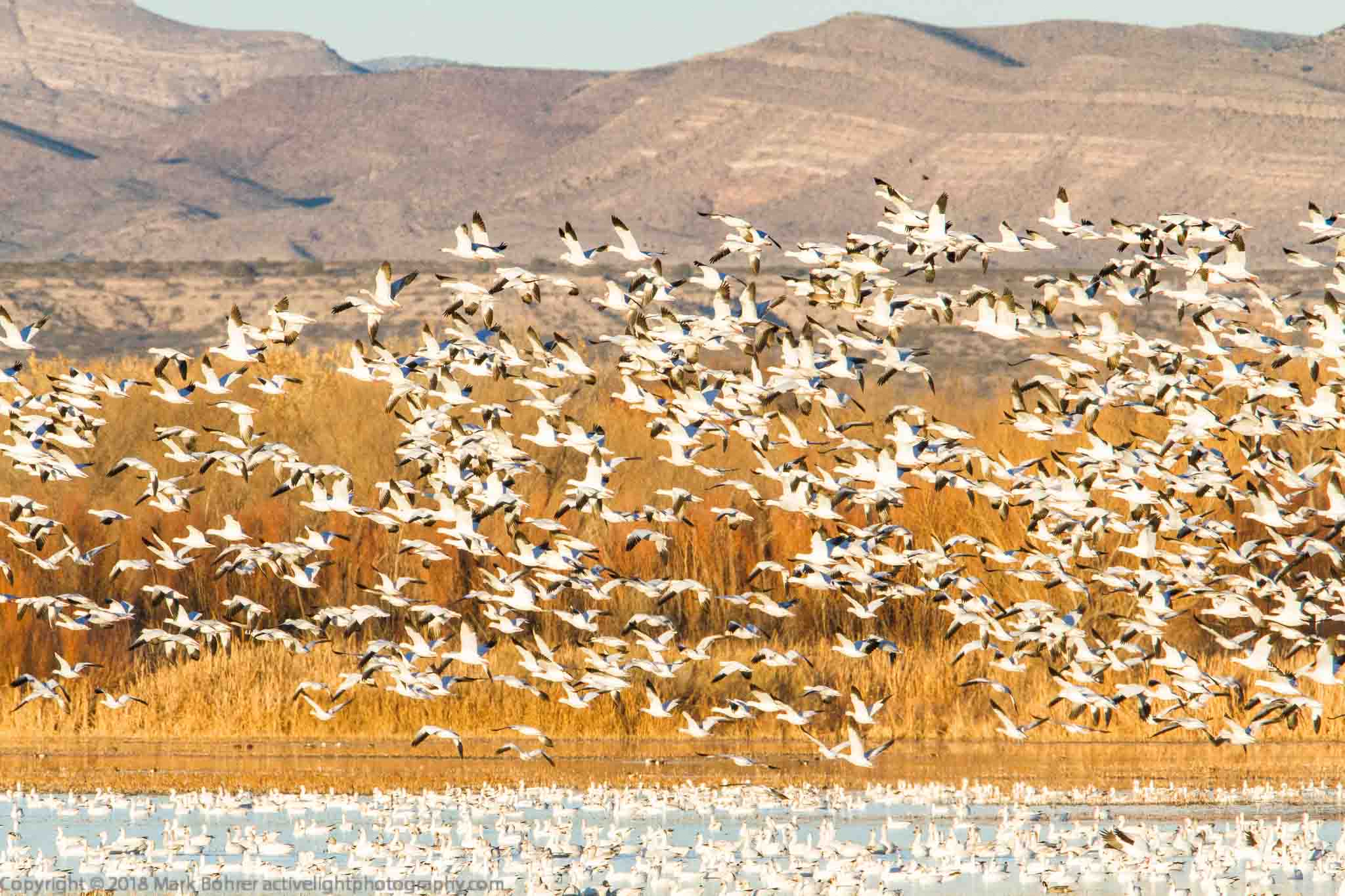 2017 – Afternoon snow goose liftoff Take Two – All The Birds You Can Shoot We returned for another late afternoon at Bosque, this time on the South (Marsh) Loop. We went back down the central road between loops, where I managed to catch one snow goose mass liftoff, this time with 500mm f/4L IS and 1.4X extender (700mm) on the 7D. But the best shooting was the next morning. We once again awoke at 0-dark thirty, and went looking for snow geese closeups. Handheld Plus Tripod Equals Flight Shots and Closeups We found them mixed with cranes on either side of the North Loop’s returning E-W section. Flocks of both species were fairly close to the road, making it what some would call a target-rich environment. I set up the 700mm / 7D combo on my Wimberley sidekick gimbal head and Gitzo 1325 mk II tripod. I also had an EOS 5D mk IV mounting the 400mm f/4 DO IS slung over a shoulder for handheld flight shots. 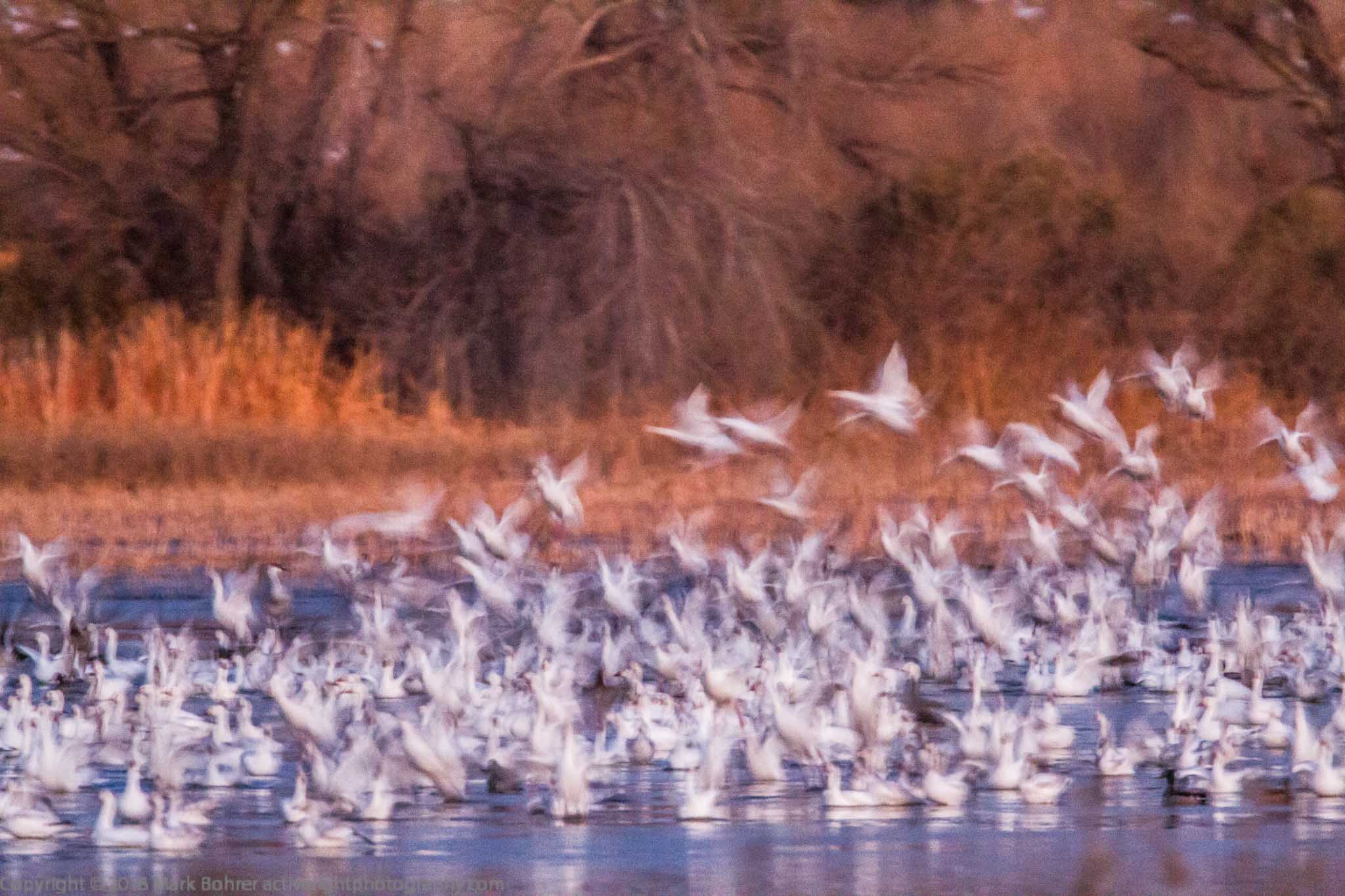 Impressionistic geese The combination of gear worked great. Starting a few minutes before sunrise (again no sunrise color), I caught the first snow goose liftoff in warm light. The only catch was incredibly slow shutter speeds at ISO 6400 with lens wide-open – my results were very Impressionistic. 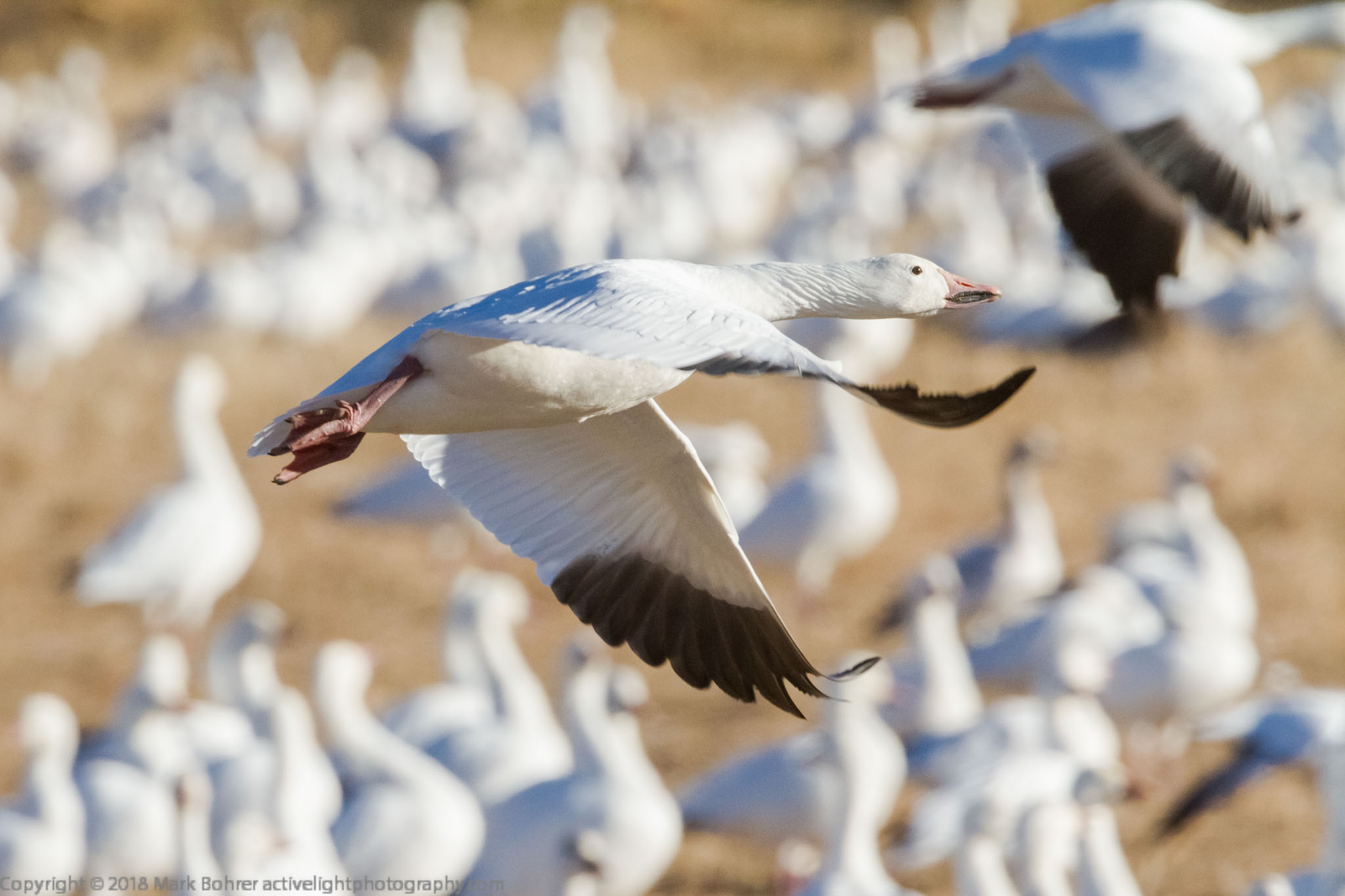 Solo goose takeoff 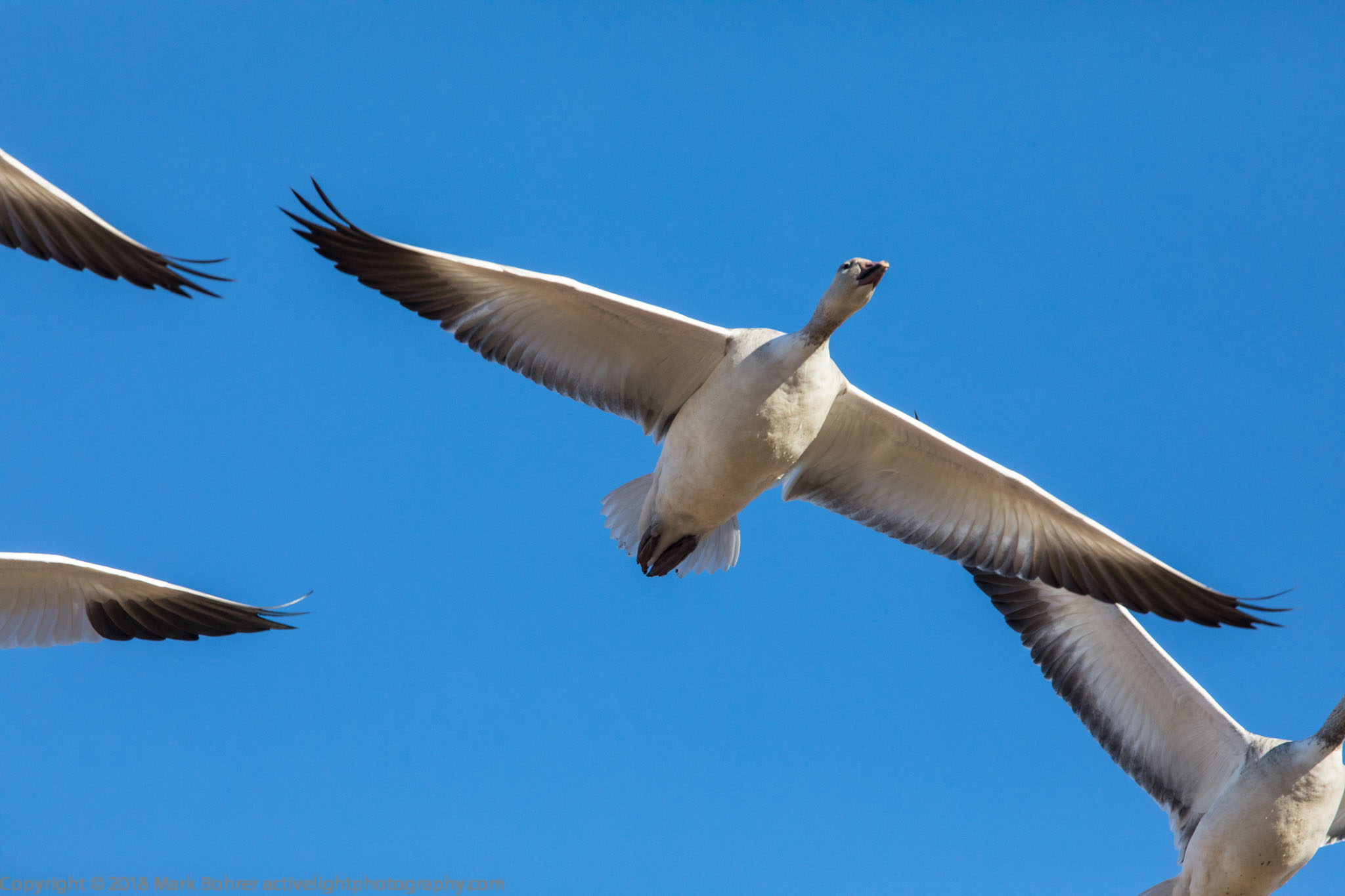 Overhead flight – 400mm full-frame, uncropped Later, I got much sharper results tracking some goose takeoffs with the 700mm on the tripod. The handheld 400mm let me capture birds flying overhead at odd angles. 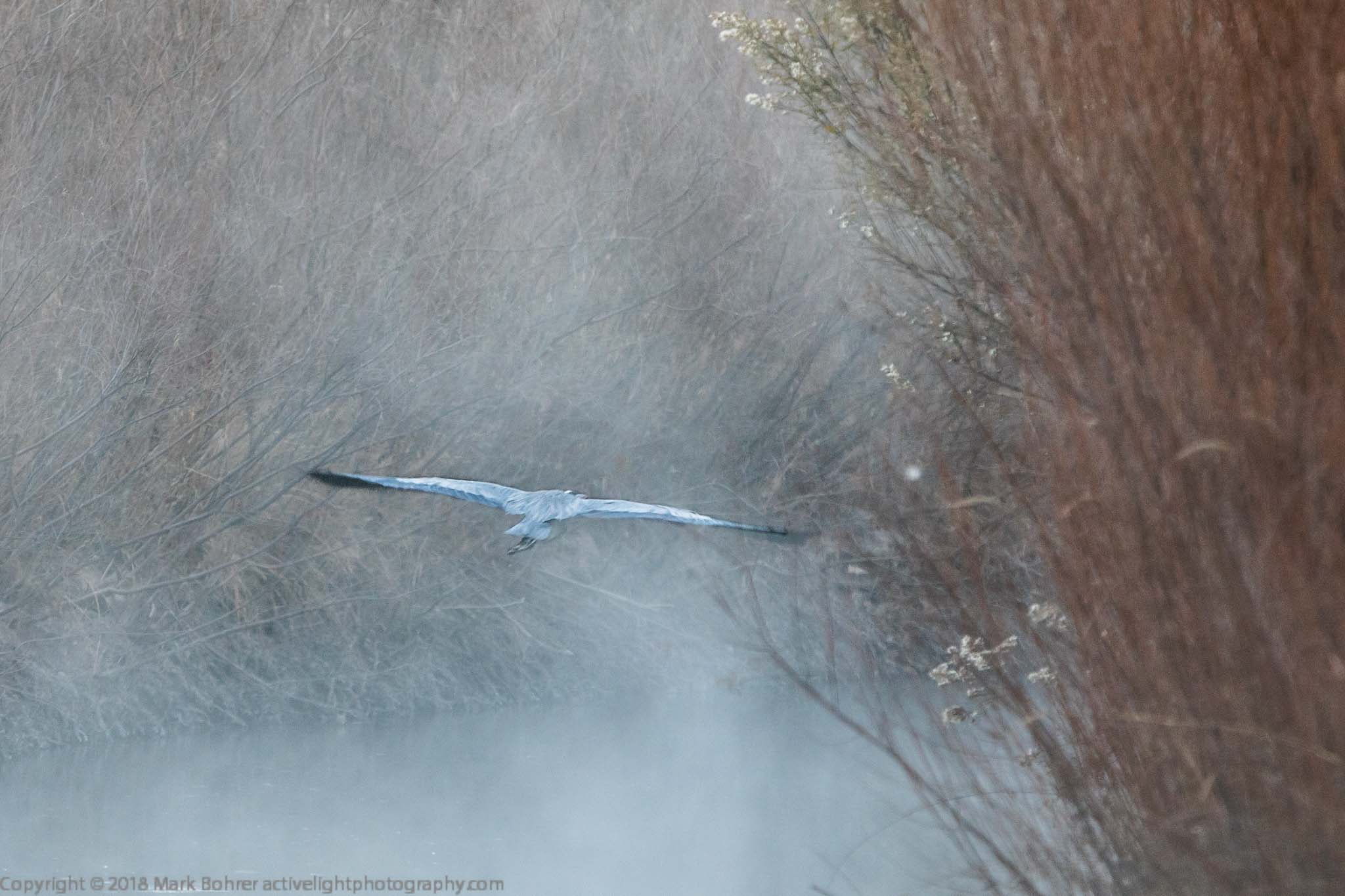 Great blue heron flying into the fog I’m not always the best wildlife spotter. My wife Pat noticed a great blue heron roosting in fog that I missed completely, so we stopped. It flew off when I went looking for it on foot, but not before I captured it disappearing into the fog. Again, this shot was a bit more painterly than scientific. 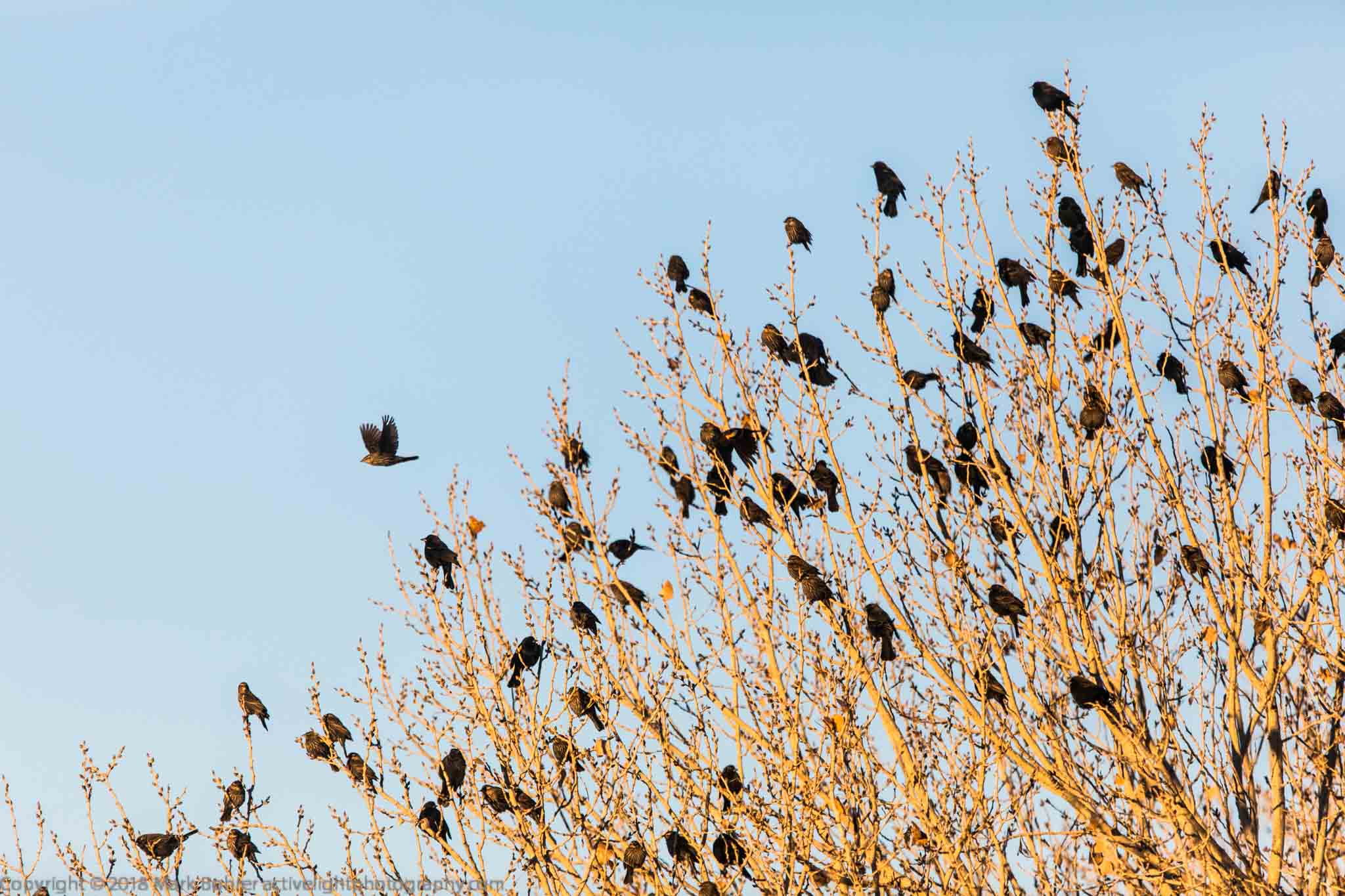 Blackbird tree A tree full of red-winged blackbirds also caught my eye. There were more male-female pairs than I’d ever seen in one place. 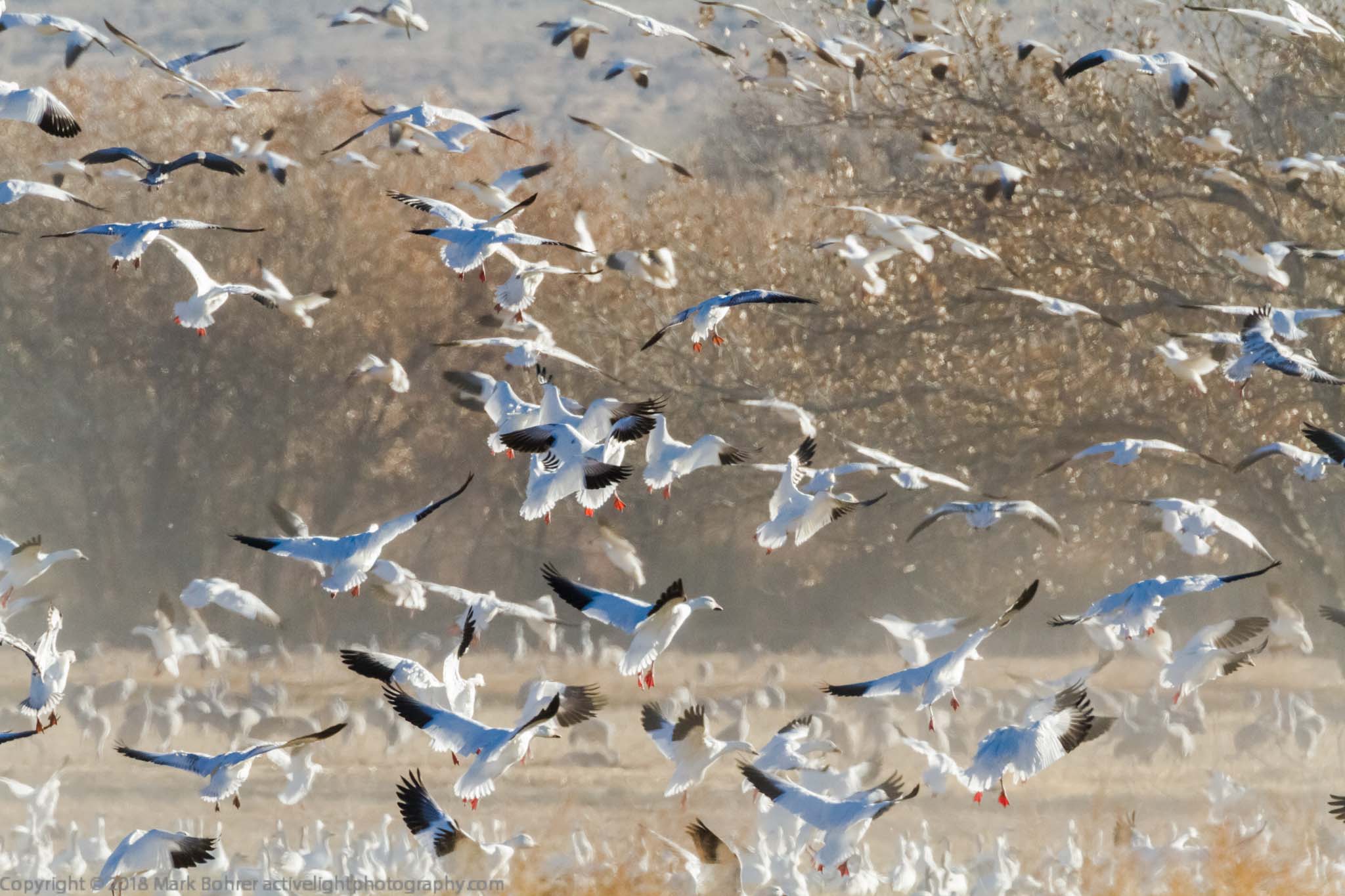 Mass takeoff 2  Start of the mass A few hundred gabbling geese looking for food on the ground will just hit you with their noise. Add heavy wingbeats and excited ‘out of my way’ calls of a mass liftoff and you have a sound riot rivaling an enthusiastic crowd at the Hollywood Bowl. I didn’t get the liftoff with sunrise pinks and reds I’d wanted, but I did capture one in mid-morning. And it was still a spectacle. Finally the words of my old mentor Moose Peterson echoed in my head – “Light’s getting pretty hard, time to pack up.” 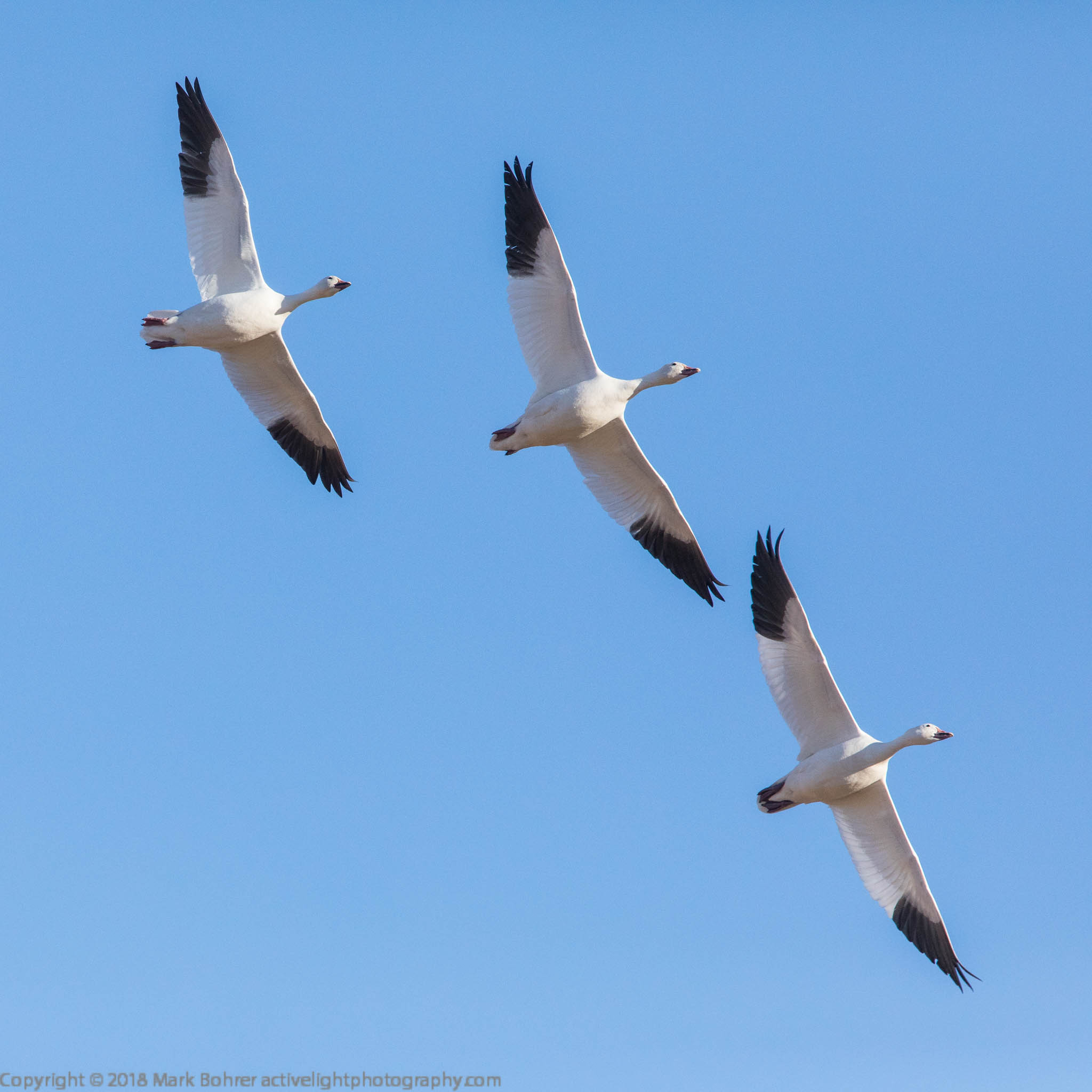 Flight shot in blue Towards the end of the North Loop, we saw another group of snow geese milling around. I stopped for a few handheld shots, but the light was pretty contrasty and the sky was a boring pale blue. So we finally headed back to Socorro for breakfast. It’s always satisfying when I know I have a few keepers, much less the embarrassment of visual riches I was fortunate to capture. 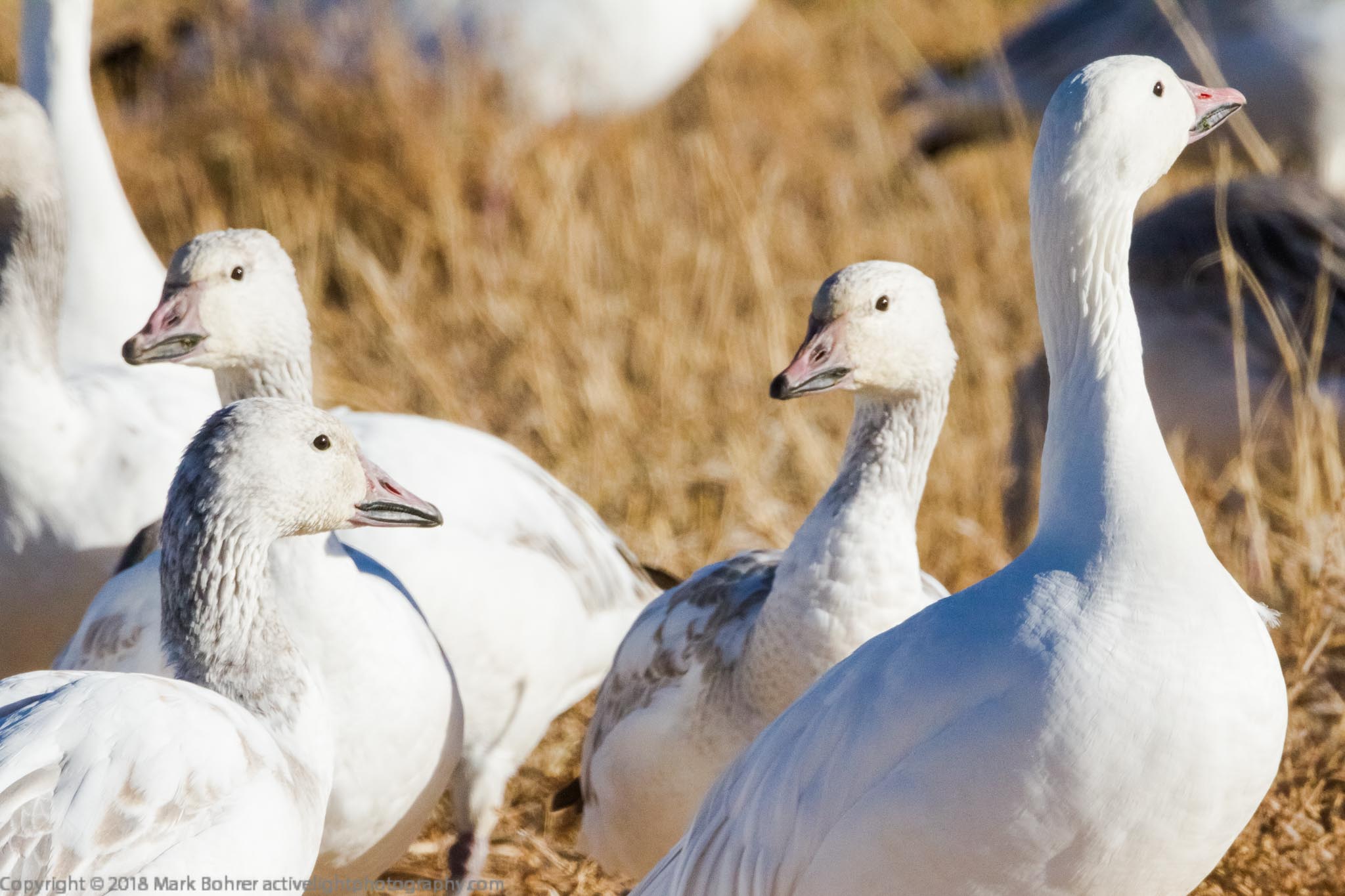 Milling goose heads Shot Notes Blue sky backgrounds aren’t very exciting, so I either avoid them or try to fill them with clouds of flying birds. Showing some of the background they’re flying against also makes flight shots much more interesting. I do this most easily just after takeoff, but I need to find one bird to focus on. After watching awhile, I can predict who will probably fly off just before they do it. But not always – sometimes it’s pure luck. Once a group takeoff is in progress, I usually have enough time to pick out that one bird. A Wimberley gimbal-mount on your tripod is just about the only way to do this with a monster telephoto. If you have birds flying low overhead, a handheld 400mm f/5.6 or f/4 is a great way to capture them. I use a 400mm f/4 DO IS v1, just because it was what I bought first for wildlife. Bird photographer Arthur Morris calls his 400mm f/5.6L his “toy” lens. Morris was among the first to guide photographers at Bosque, and reading his reports in 2003 first got me interested in the place. Even with a long lens, you want to get close enough to fill the frame with interesting stuff that contributes to your subject. I remember Magnum founder Robert Capa’s words – “If your pictures aren’t good enough, you’re not close enough.” It doesn’t matter how big your lens is – you still need to zoom with your feet. 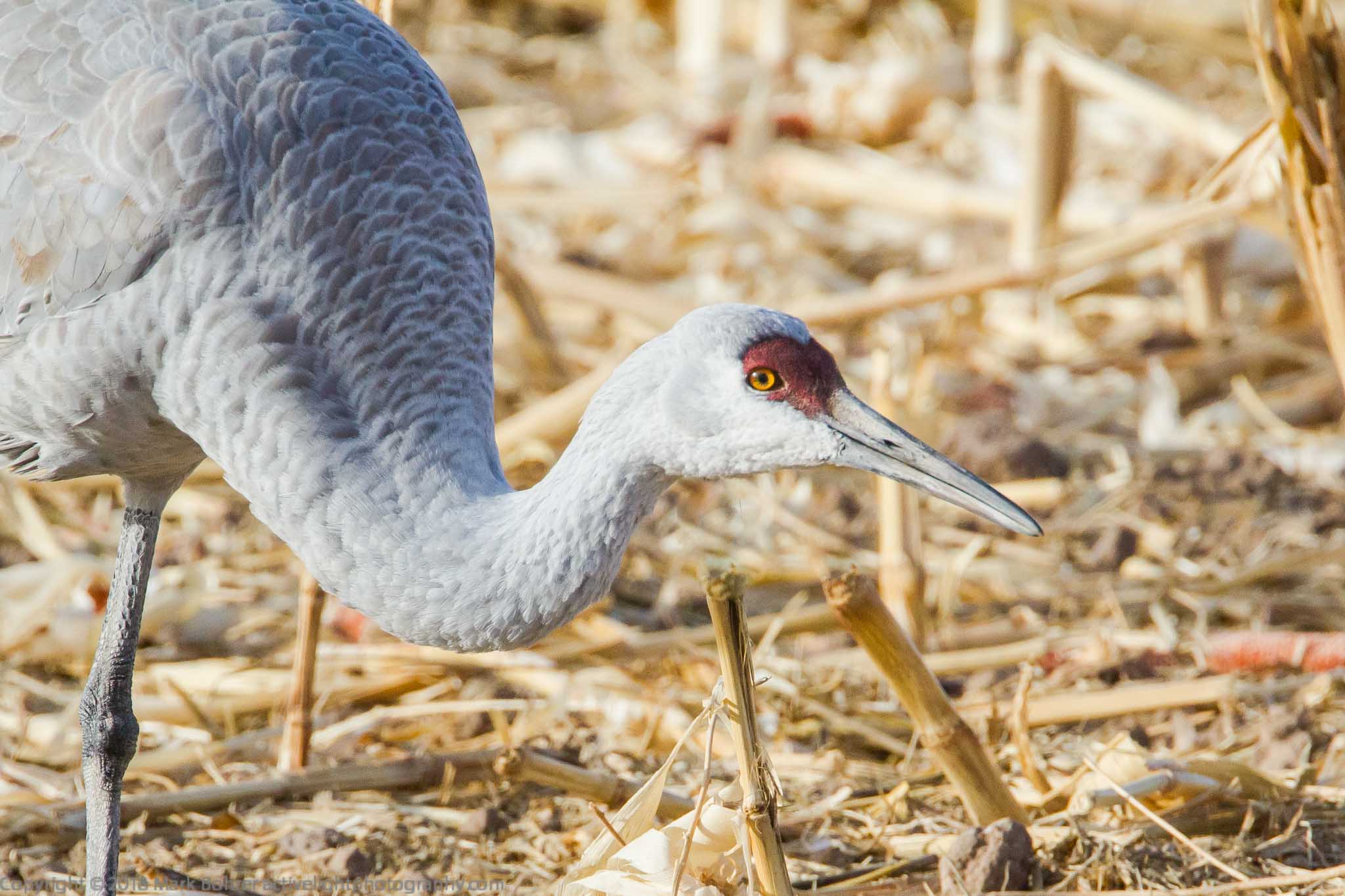 Who are YOU? More Information Bosque del Apache – Plan Your Visit, retrieved from https://www.fws.gov/refuge/Bosque_del_Apache/visit/plan_your_visit.html Bosque del Apache National Wildlife Refuge New Mexico and Tour Loop Maps, retrieved from https://tinyurl.com/y99quf68 US Fish and Wildlife Service, Bosque Del Apache National Wildlife Refuge, retrieved from https://tinyurl.com/ycrq3u5x Don’t bring a knife to a gunfight, right? Next week’s post will show you when to ignore this advice. |
(408) 483-3782
Curious about how to shoot ruins?(408) 483-3782
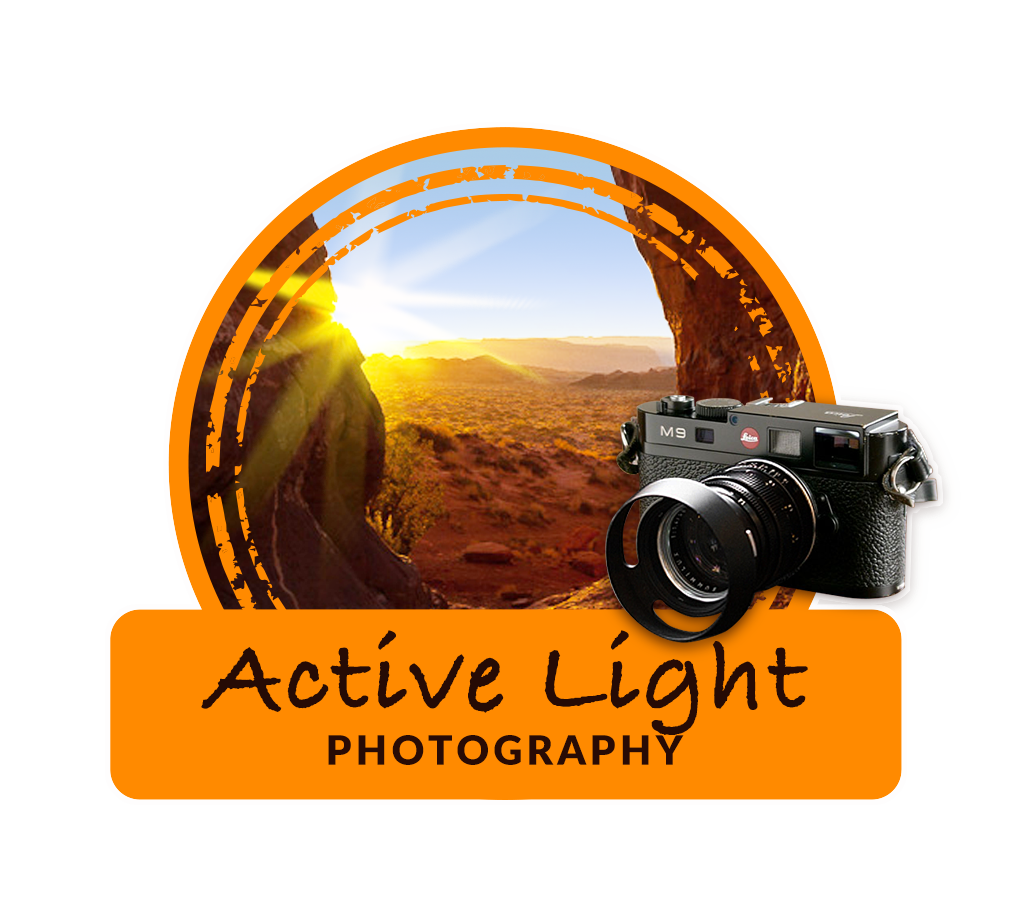
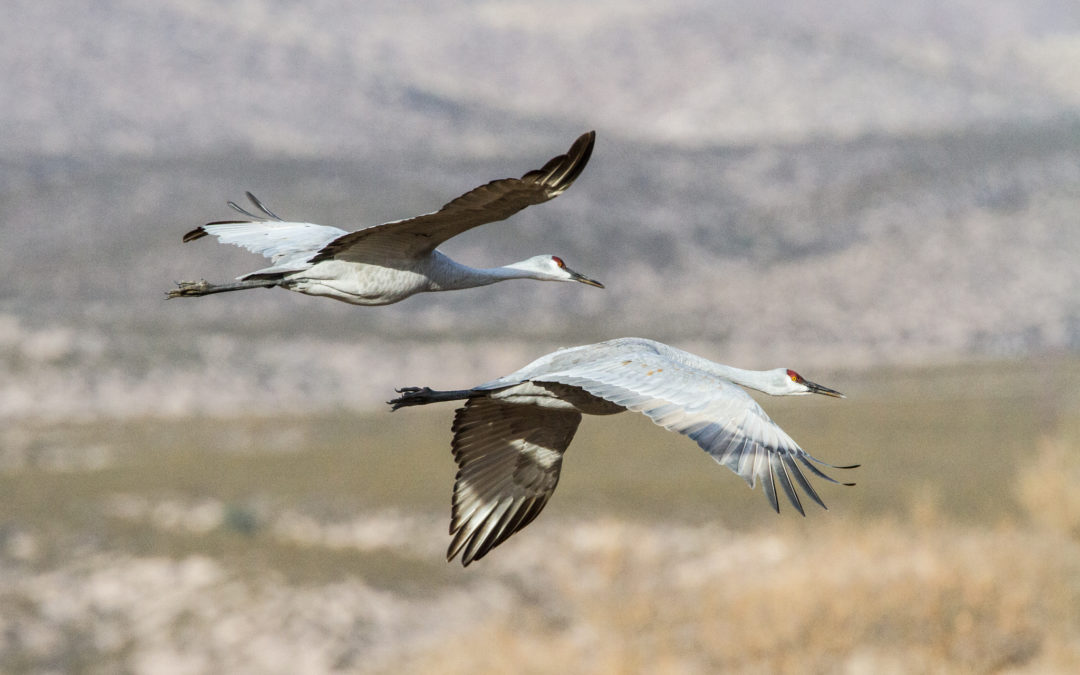
Recent Comments